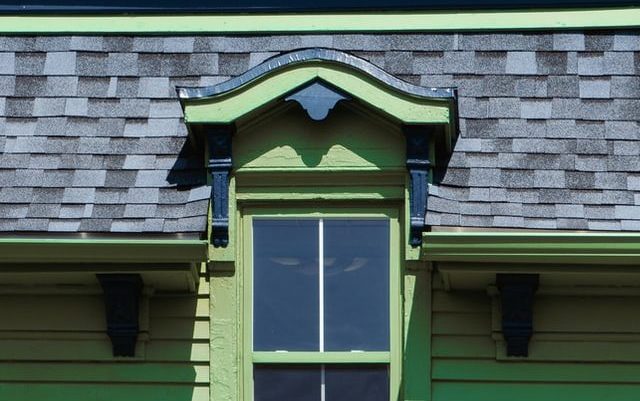
Shingles are among the most popular roofing options for homeowners today. They’re relatively cost effective and come in a variety of colors and materials. Meaning you’re sure to find shingles to meet your budget and aesthetic preferences. They’re also considered to be highly durable, minimizing the need for extensive roof repairs.
But that’s not to say living with a shingle roof is always going to be straightforward. Like all responsible homeowners, you want to make sure you know a little about the type of roof you’re investing in. Not to mention that there will occasionally be issues you need to have some background knowledge of so you can make appropriate decisions.
So, let’s dive into some of the basic questions homeowners tend to have about shingles.
1) What’s the Difference Between Shingles and Tiles?
Both tiles and shingles are popular materials designed for pitched roofs, so it’s not unusual for people to be uncertain about the differences here. Shingle is usually in the form of flat slats of material — this can be asphalt or slate but there are also composites of eco-friendly fibers. Roofing tiles are most often seen in their curved form and constructed of ceramic materials.
Both can be effective in protecting homes from the elements and both are considered to be highly durable. The main difference tends to be in cost. Shingle is usually a lower cost as a result of the cheaper materials and ease of installation.
2) Can Single Shingles Be Bought?
You are unlikely to find single shingles for sale in any major hardware store. This is largely because it is simply not cost effective for manufacturers to produce shingles for sale in low quantities. Indeed, some types are only available as strips of multiple shingles. A roofing contractor may have single slats they can use to patch your roof when one comes loose, but don’t expect to be able to buy one yourself.
The good news is that shingles are usually a lower cost option for roofing. As such, it’s worth buying a box of shingles so that you have spares should you need them in the future. A standard bundle will usually contain around 29. This might be more shingles than you think you’ll need. But remember that a shingle roof usually lasts around 20 years or so. There may be occasions during this time that you’ll need to make spot repairs.
3) Will a Roof Leak with One Shingle Missing?
A roof won’t necessarily leak when you have one shingle missing, but it really comes down to the positioning of the absent shingle. The layout of shingles on a roof is designed to offer maximum protection from the elements. This is achieved by staggering the panels along the roof to make sure that the seams attaching the shingle to the roof are covered by the body of another set of shingles. It’s the coverage of these seams that helps to prevent leaks.
If the shingle that is missing was covering the seam of a lower set of shingles, this means it is left exposed to the elements. If rain water, snow, or other forms of moisture get underneath the seam, this can certainly result in a leak. If you are lucky enough to find your missing shingle was not covering a seam, you may still have some protection for the time being.
It’s also important to note that the single shingle doesn’t have to be entirely missing for it to cause problems in a seam area. If you’ve had particularly strong wind or storms, part of a shingle may have become damaged. If your roof wasn’t fitted by experienced professionals, there’s also a chance the shingles may be displaced by inclement weather, too. These elements can also cause the seams to become exposed and result in leaks.
4) How Many Nails Go in One Shingle?
It is usually recommended that you use 4 nails (or fasteners) for each panel of shingle. There are a couple of caveats to this, though. The first row of shingles along the eaves should be attached using at least 5 nails. If you have a particularly steep pitched roof, this can see your shingles having a greater potential for falling. As such, you should use between 4 and 6 nails per panel. Similarly, if you live in an area of Texas that sees high winds, storms, and hurricanes, you’ll need to fasten each shingle with about 6 nails.
5) How to Use a Shingle Hammer
Shingles are usually fitted using a specialized type of hammer. On one side there is a claw designed to lift roofing nails and shingles effectively. In some instances, this claw is sharpened or hatchet-styled for cutting shingles as required. On the other side, there is a standard type of hammer face to drive in the nails. Many shingle hammers today also have magnetized edges to help make it easier for you to pick up and place nails before fastening them.
Using a shingle hammer usually involves the following steps:
- If needed, use the sharp or hatchet claw of the shingle hammer to cut the panel to fit the space.
- Measure the exposure (the portion of the lower shingle left uncovered by the shingle you’re placing) using the gauge on the hammer. This gauge or measure or usually on the head of the shingle hammer, and in general set at around 5 inches. Put the shingle in place accordingly.
- Use the face of the hammer to fasten the nails through the shingle and into the surface of the roof structure. These should be spaced evenly along the shingle, and kept around 1 inch from the sealing edge, depending on the type of shingle (follow the manufacturer’s instructions on this).
Wrapping Up
Shingles are among the most popular materials for roofing today. They tend to be more cost effective and have an element of durability that can see a decent level of longevity for your roof. Remember that shingles tend to be sold in bundles, so if you have a repair project, you’re likely to have some leftovers. Though this can be handy, given that a single missing shingle can cause a leak depending on its positioning.
When you’re fitting shingles, you should use at least 4 nails per square, but this can vary depending on the size of shingle, the pitch of the roof, and the local weather conditions. When fitting or repairing, you also need to familiarize yourself with the features of a shingle hammer Above all else, if you are in any way uncertain about an aspect of your shingle roof, it is also best to consult a professional before taking any action.





